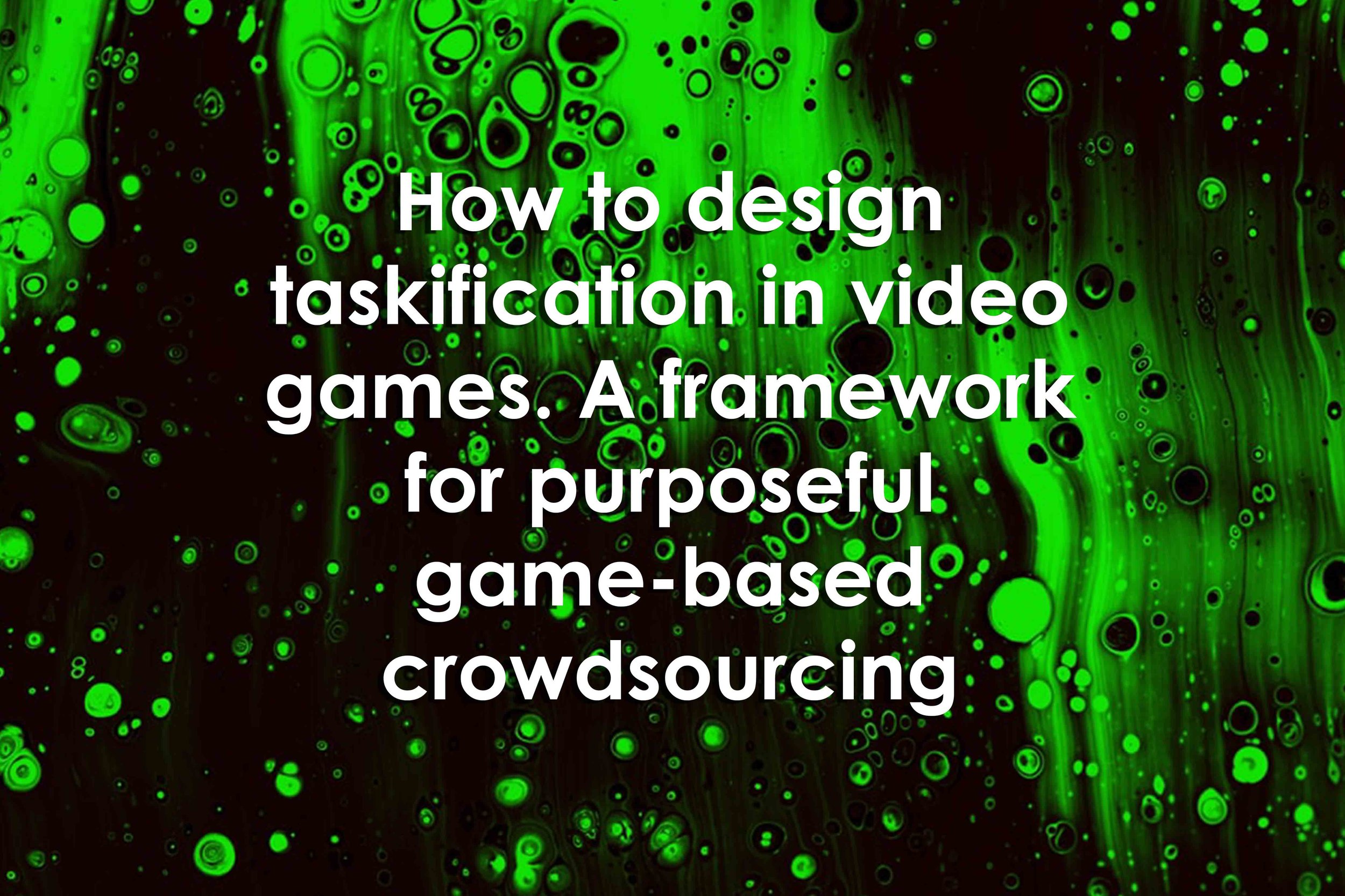How to design taskification in video games. A framework for purposeful game-based crowdsourcing
How to design taskification in video games. A framework for purposeful game-based crowdsourcing
How to design taskification in video games. A framework for purposeful game-based crowdsourcing
By Anna Quecke and Ilaria Mariani
Abstract
“When it comes to citizen science, games can play an important role encouraging voluntary engagement of the public in activities contributing to scientific investigation. This considering that, on the one hand, what appears as an interesting and challenging scientific topic may not be seen as captivating and engaging for the general public; on the other, that to address a scientific challenge it is often required a level of knowledge that acts a barrier to access. Consequently, it comes the necessity to develop projects with scientific tasks that can be accomplished by novices, while ensuring the interest of experts. In this context, game-based crowd sourcing approaches and taskification in particular can serve as powerful motivation systems. By integrating seamlessly the task into an established game experience, it is possible to target players and direct them to perform the crowdsourcing activity. Situated at the intersection of the three theoretical domains of gamification, serious games, and crowdsourcing game systems, this paper presents a framework to taskify games with crowd sourcing activities. Considering the role that coherently built story-worlds, narrative, and game mechanics play, the framework aims at providing designers with clear guidance for building purposeful crowdsourcing activities within video games.”
Reference
Quecke, A., &Mariani, I. (2021). How to design taskification in video games. A framework for purposeful game-based crowdsourcing. Retrieved January 31, 2022, from https://re.public.polimi.it/handle/11311/1183802
Keyword
Game design, taskification, crowdsourcing, framework, research

